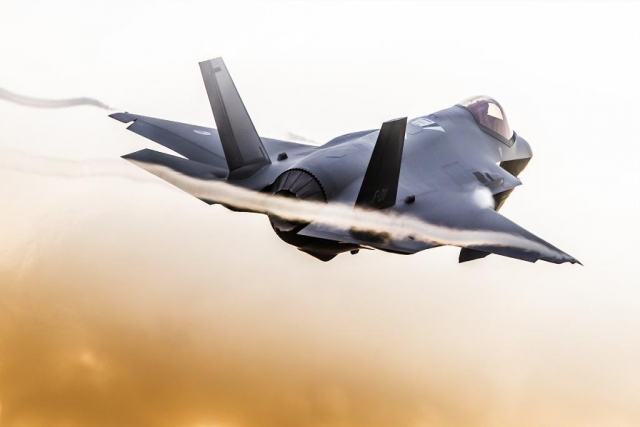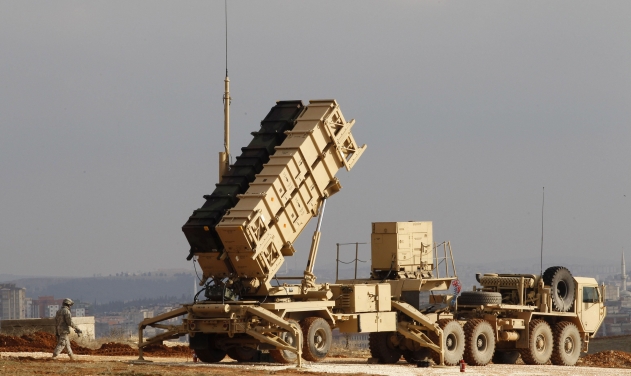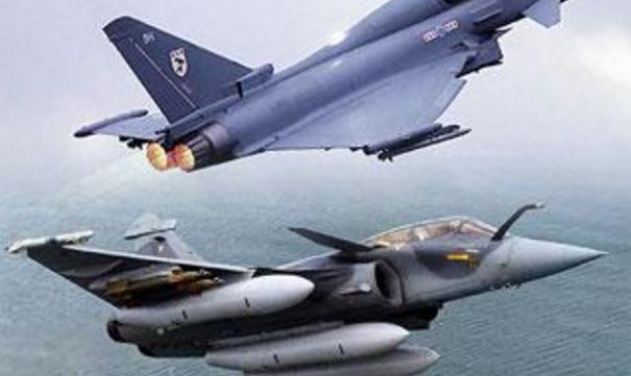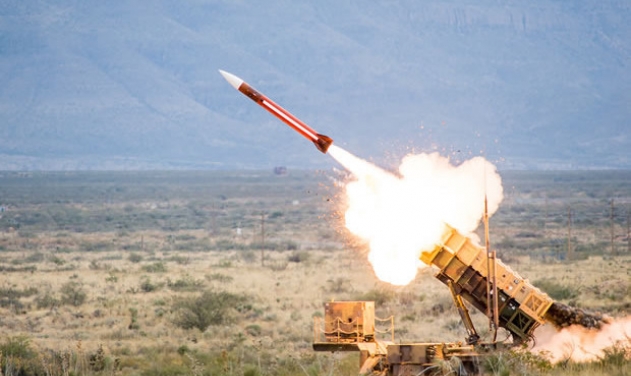Switzerland Selects F-35 Jets, Patriot Missile Systems

The Swiss Federal Council today announced that it is set to propose that Parliament approve the procurement of 36 F-35A fighter aircraft from US manufacturer Lockheed Martin and five Patriot fire units from US manufacturer Raytheon together worth 8 billion CHF (US$ 8.64 billon).
The Federal Council based its decision on a comprehensive technical evaluation of four new fighter aircraft candidates (Eurofighter by Airbus, Germany; F/A-18 Super Hornet by Boeing, USA; F-35A by Lockheed Martin, USA; Rafale by Dassault, France) and two candidates for a longer-range GBAD system (SAMP/T by Eurosam, France; Patriot by Raytheon, USA), a council statement said today.
F-35 scored 95 points lead leads over rival candidates
With 336 points, the F-35 showed the highest overall benefit and was the clear winner with a lead of 95 points or more over the other candidates. This aircraft scored best in three of the four main criteria evaluated:
The F-35A is able to ensure information superiority; this means pilots benefit from a higher situational awareness in all task areas when compared with the other candidates. This is especially true for day-to-day air policing.
What is more, the F-35A is the only aircraft that has been designed from the ground up to be especially difficult for other weapons systems to detect. The resulting high survivability is a great advantage for the Swiss Air Force.

In addition, because the F-35A is comparatively easy to operate and is able to provide information superiority, it requires less training and has a better ratio of flight to simulator hours. Because of this, the F-35A requires about 20% fewer flight hours than other candidates, and about 50% fewer take-offs and landings than the Air Force’s current jet aircraft, which the F-35A will be replacing.
Finally, it can be assumed that as the newest of the weapons systems evaluated, the F-35A will be able to sustain its technological lead well into the future. Given the planned service life of 30 years, this is a major advantage over the other candidates.
In terms of product support, the F-35A achieved the highest rating because of its efficient operation and maintenance, modern training design, and the high security of supply throughout its service life. This is attributable in part to the F-35A being manufactured in the highest numbers and it being the aircraft most commonly used by air forces in Europe.
The F-35A was also the best performer in terms of cooperation, offering extensive opportunities for operational collaboration and broad access to data and technical resources.
In direct offset, the F-35A did not achieve the best result at the time the bid was made. The offset obligation of 60% of the order must be fulfilled in full no later than four years after receipt of the final delivery.

Data autonomy ensured
When making its decision, the Federal Council also took account of existing technological dependencies of the manufacturer and manufacturing country. In the case of the F-35A, the system’s cyber management, the security of its computer architecture and its cyber protection measures combine to ensure an especially high level of cyber security.
F-35A to cost around CHF 2 billion less than competitors
In addition to the benefits, the F-35A also achieved by far the best result in terms of costs. Both procurement and operation costs are the lowest for this aircraft. At the time the bids were made in February 2021, the procurement costs amounted to CHF 5.068 billion – well under the financial cap of CHF 6 billion set by voters. Even when accounting for inflation up to the time of payment, procurement costs will remain below the credit limit.
The F-35A also has the lowest operating costs of all of the candidates evaluated. The total costs of the F-35A (i.e. procurement plus operating costs) amounts to approximately CHF 15.5 billion over 30 years. This is around CHF 2 billion less than the second-lowest bidder.
Longer-range ground-based air defence: Patriot with better benefits and lower costs
In the evaluation of longer-range GBAD systems, Patriot won out against SAMP/T in all four main categories, in some cases by a very clear margin, and in particular in the main category, effectiveness. With the Patriot system, areas can be protected both independently and in combination with fighter aircraft. Patriot has an effective altitude of well over 20,000 metres (vertical) and an effective distance of well over 50 kilometres (horizontal).
The area to be defended is 15,000 square kilometres; this can be achieved with five Patriot fire units.
In terms of costs, Patriot is the less expensive option of the two. Its procurement costs including inflation and VAT up to the time of payment amount to CHF 1.97 billion. Combined with its projected operating costs over 30 years, the total costs for the Patriot system will be around CHF 3.6 billion – significantly less than its competitor. The offset obligation of 100% of the order must be fulfilled in full no later than four years after the final delivery.













